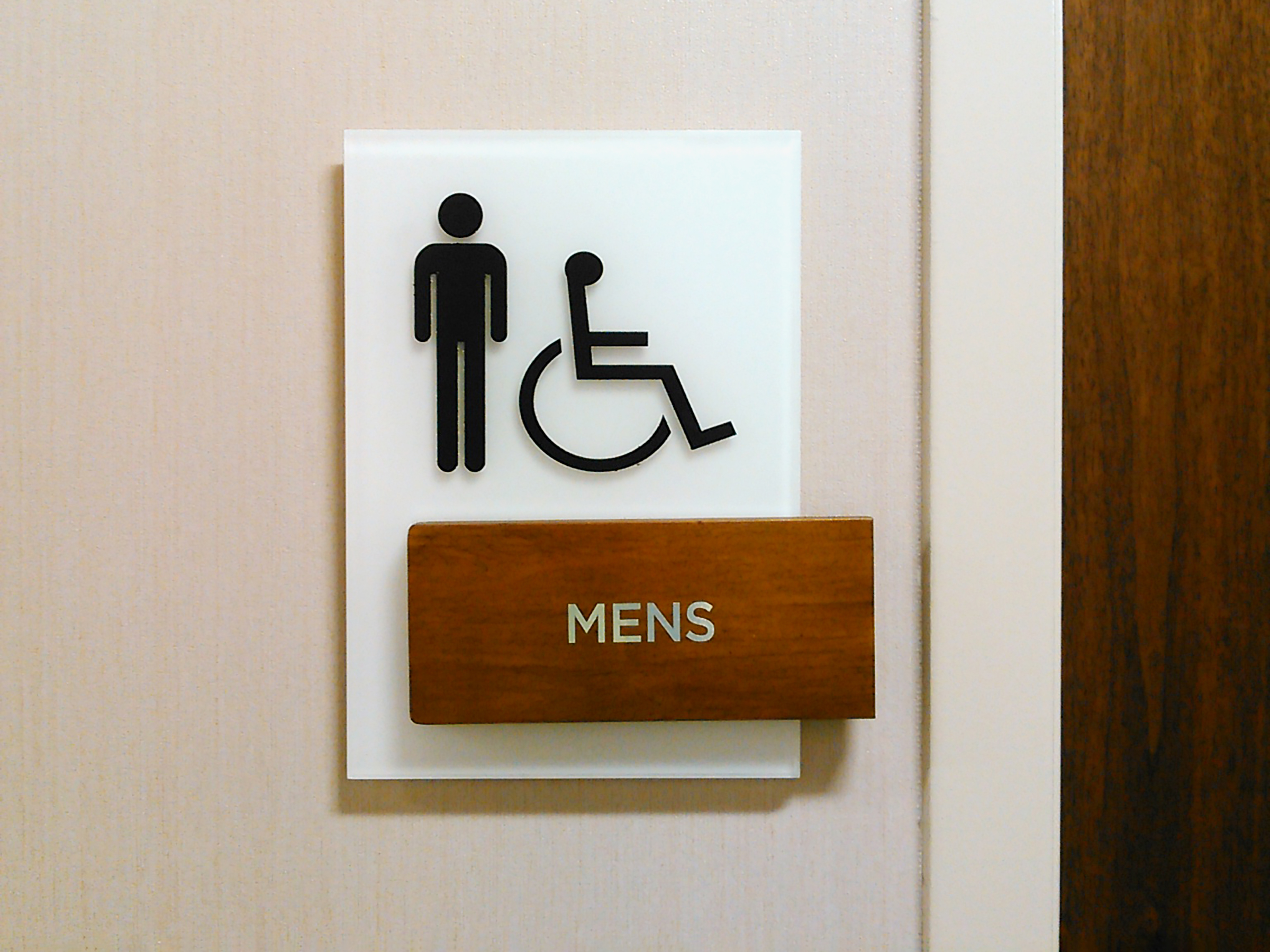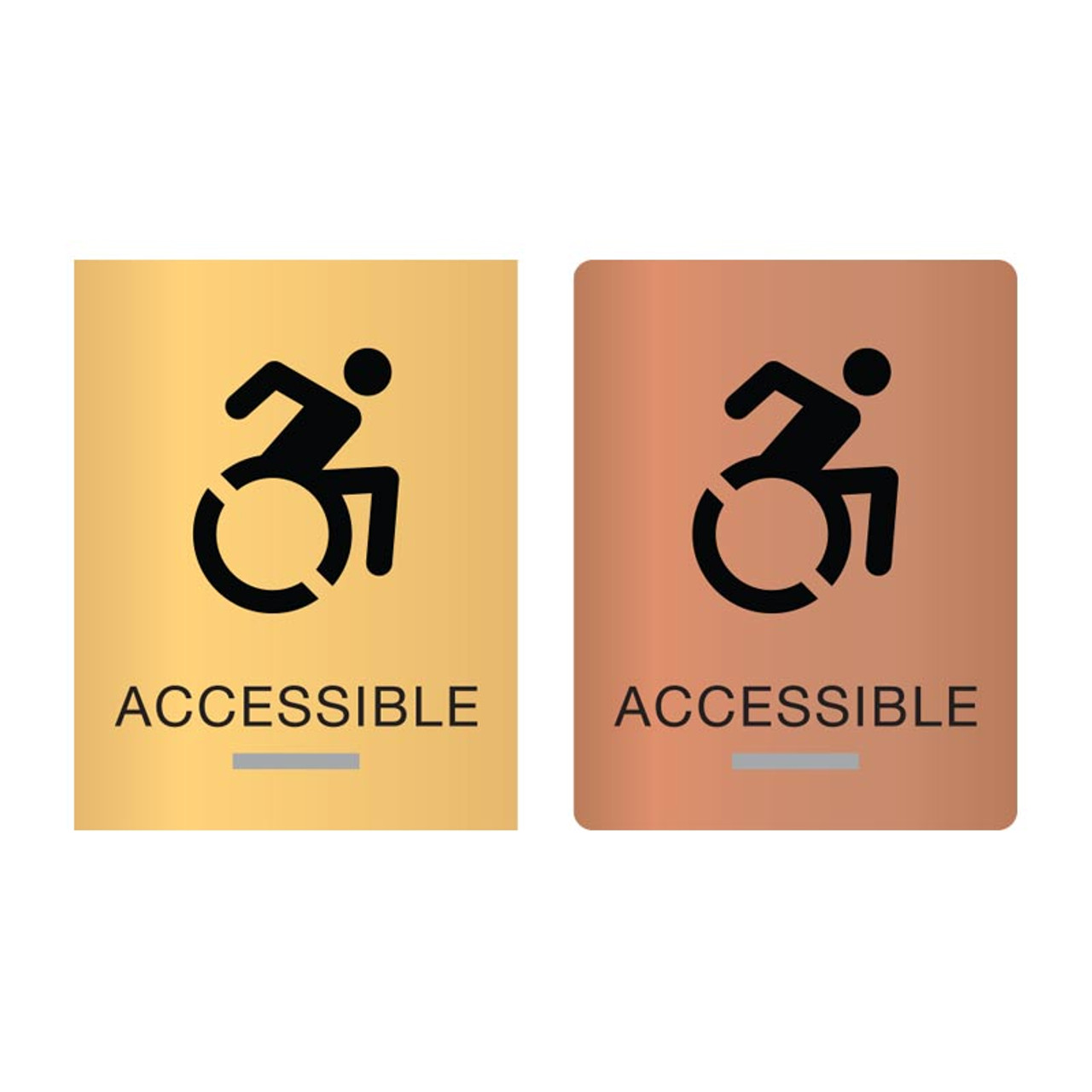Exploring Creative Designs for Effective ADA Signs
Exploring Creative Designs for Effective ADA Signs
Blog Article
Checking Out the Key Functions of ADA Indications for Improved Availability
In the realm of ease of access, ADA signs function as silent yet effective allies, ensuring that spaces are navigable and inclusive for people with handicaps. By incorporating Braille and tactile elements, these signs damage barriers for the visually damaged, while high-contrast shade plans and legible typefaces accommodate diverse aesthetic needs. Their calculated positioning is not arbitrary yet rather a computed effort to facilitate smooth navigation. Yet, beyond these attributes exists a much deeper narrative concerning the evolution of inclusivity and the ongoing commitment to developing fair areas. What a lot more could these signs indicate in our quest of universal accessibility?
Relevance of ADA Compliance
Making certain compliance with the Americans with Disabilities Act (ADA) is crucial for cultivating inclusivity and equivalent access in public areas and offices. The ADA, passed in 1990, mandates that all public centers, companies, and transportation services fit people with specials needs, guaranteeing they enjoy the same legal rights and possibilities as others. Compliance with ADA criteria not just meets lawful responsibilities yet also enhances an organization's track record by demonstrating its dedication to diversity and inclusivity.
One of the key facets of ADA conformity is the implementation of easily accessible signs. ADA signs are designed to make certain that people with specials needs can quickly navigate via structures and spaces.
Additionally, adhering to ADA regulations can alleviate the threat of legal repercussions and possible fines. Organizations that stop working to follow ADA guidelines may encounter fines or lawsuits, which can be both financially burdensome and harmful to their public picture. Thus, ADA conformity is important to fostering a fair atmosphere for everyone.
Braille and Tactile Components
The unification of Braille and responsive elements right into ADA signage personifies the concepts of accessibility and inclusivity. It is normally put under the equivalent message on signage to ensure that individuals can access the details without aesthetic assistance.
Responsive aspects expand past Braille and consist of increased symbols and characters. These parts are made to be noticeable by touch, allowing people to recognize room numbers, restrooms, exits, and other important locations. The ADA establishes certain guidelines regarding the dimension, spacing, and positioning of these responsive aspects to enhance readability and make sure consistency across various atmospheres.

High-Contrast Shade Plans
High-contrast color design play a crucial function in enhancing the presence and readability of ADA signage for people with visual problems. These plans are important as they make the most of the distinction browse around here in light reflectance in between message and background, making sure that signs are conveniently discernible, even from a distance. The Americans with Disabilities Act (ADA) mandates the usage of particular shade contrasts to accommodate those with restricted vision, making it a vital element of conformity.
The efficacy of high-contrast shades lies in their capacity to stick out in various illumination problems, including poorly lit atmospheres and locations with glare. Commonly, dark text on a light history or light message on a dark background is used to achieve ideal comparison. For instance, black message on a yellow or white history offers a plain aesthetic difference that helps in fast recognition and understanding.

Legible Fonts and Text Dimension
When considering the style of ADA signage, the option of legible font styles and proper message dimension can not be overemphasized. These components are important for making certain that indicators i thought about this come to individuals with visual disabilities. The Americans with Disabilities Act (ADA) mandates that font styles have to be sans-serif and not italic, oblique, script, highly decorative, or of uncommon form. These requirements help guarantee that the text is easily readable from a distance and that the characters are distinguishable to varied target markets.
According to ADA guidelines, the minimum message height need to be 5/8 inch, and it must raise proportionally with checking out distance. Uniformity in text dimension contributes to a cohesive aesthetic experience, helping people in navigating settings effectively.
Additionally, spacing in between lines and letters is essential to readability. Sufficient spacing prevents personalities from appearing crowded, boosting readability. By adhering to these requirements, developers can substantially enhance accessibility, making sure that signage serves its desired purpose for all people, despite their aesthetic capacities.
Efficient Positioning Strategies
Strategic placement of ADA signage is crucial for making best use of accessibility and ensuring compliance with lawful criteria. ADA standards specify that indications must be installed at a height between 48 to 60 inches from the ground to ensure they are within the line of view for both standing and seated people.
Furthermore, signs have to be put adjacent to the lock side of doors to allow simple recognition before entry. Uniformity in indication positioning throughout a facility boosts predictability, minimizing confusion and enhancing overall customer experience.

Final Thought
ADA indications play an essential duty in advertising availability by integrating functions that attend to the requirements of individuals with impairments. These aspects jointly promote an inclusive environment, underscoring the importance of ADA conformity in ensuring equivalent accessibility for all.
In the world of availability, ADA indications serve as quiet yet effective allies, making sure that areas are navigable and inclusive for people with handicaps. The ADA, established in 1990, mandates that all public centers, employers, and transport solutions accommodate people with specials needs, ensuring they enjoy the very same civil liberties and chances as others. ADA Signs. ADA indicators are created to make sure that individuals with handicaps can quickly navigate through spaces and structures. ADA guidelines specify that indications should be placed at a height in between 48 to 60 inches from the ground to guarantee they are within the line of sight for both standing and seated people.ADA signs play an essential role in advertising ease of access by incorporating functions that address the requirements of people with impairments
Report this page